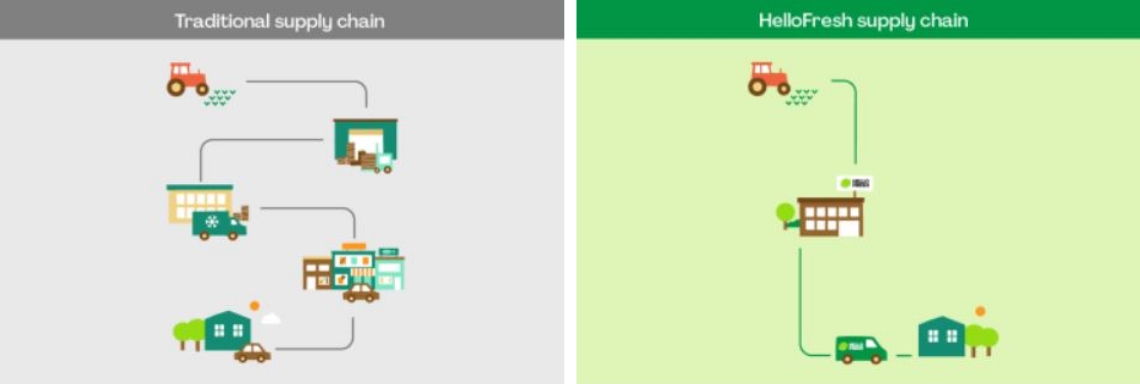We define true environmental, social and governance (ESG) integration as investing in businesses that are actively deploying their management bandwidth and their capital to manage ESG risks (“Do no harm”) or improve the environmental and/or social footprint of their value chain. Consequently, we think the meal-kit sector is a very attractive area of the food value chain—both from a profit-pool growth perspective and because of the sustainable solution it offers to customers.
We believe that rising e-commerce penetration in the broader, $3.3 trillion global food-at-home industry is a structural tailwind for the meal-kit sector, in which HelloFresh is a global leader. Its product, portioned fresh food in a box, allows households to save shopping and meal-planning time while also maintaining healthy diets. On sustainability, the estimated one-third of food produced for human consumption that is wasted and never reaches the consumer’s table is a material ESG risk for companies active within the Conscious Consumer value chain, and HelloFresh is actively addressing this food-waste issue.1
The company’s innovative, vertically integrated supply chain is more sustainable by nature, directly addressing food waste and reducing carbon emissions by deploying demand-forecasting technology and favoring directly sourced local ingredients. It achieves a food waste intensity which is some 75% lower than traditional grocery stores, operating at a 0.4g of food waste per euro of revenue, as opposed to 1.75g for the average supermarket. Meal kits, particularly those focused on directly-sourced ingredients, also reduce packaging, refrigeration time and other electricity use associated with high-street stores, resulting in 50% lower in-box plastics use and 84% lower carbon intensity than bricks-and-mortar grocery retail. As of 2020, HelloFresh became the first global carbon neutral meal-kit company, offsetting internal operations, delivery to customers and emissions from corporate travel. Management thinks there is still room to improve on its food-waste metrics through further efficiency gains and shorter lead times, while higher capacity utilization has helped decrease CO₂ emissions per box by 47% since 2019, highlighting the potential for further momentum here, as well.2
Figure 1. A More Efficient And Sustainable Supply Chain

Source: https://www.hellofresh.co.uk/about/sustainability
While online groceries almost doubled their online penetration during 2020, it remains at only 9%: that is nowhere close to other retail categories and we expect penetration to continue to rise as providers like HelloFresh improve the choice and convenience. This growth, combined with secular trends such as the increasing desire to cut calorie intake and support local food producers, are likely to be strong drivers of wallet-share migration for businesses like HelloFresh within the Conscious Consumer value chain.
HelloFresh’s competitive moat consists mainly of the complexity of its nimble supply chain and its technology platform, which is designed specifically for intricacies of the meal-kit business. It uses customer data to learn trends and preferences that can be factored into recipe development to tailor the product to customer needs. Hence, on top of its rapid growth potential, we envision meaningful operating leverage, as more efficient customer acquisition, improved retention and a higher average revenue per unit (ARPU) all translate into expanding operating profitability. In combination with HelloFresh’s vertically integrated business model, which supports an enviable 65% gross margin, we believe this increasing operating profitability can lead to significant growth in cash flow return on investment (CFROI) over the long term.








